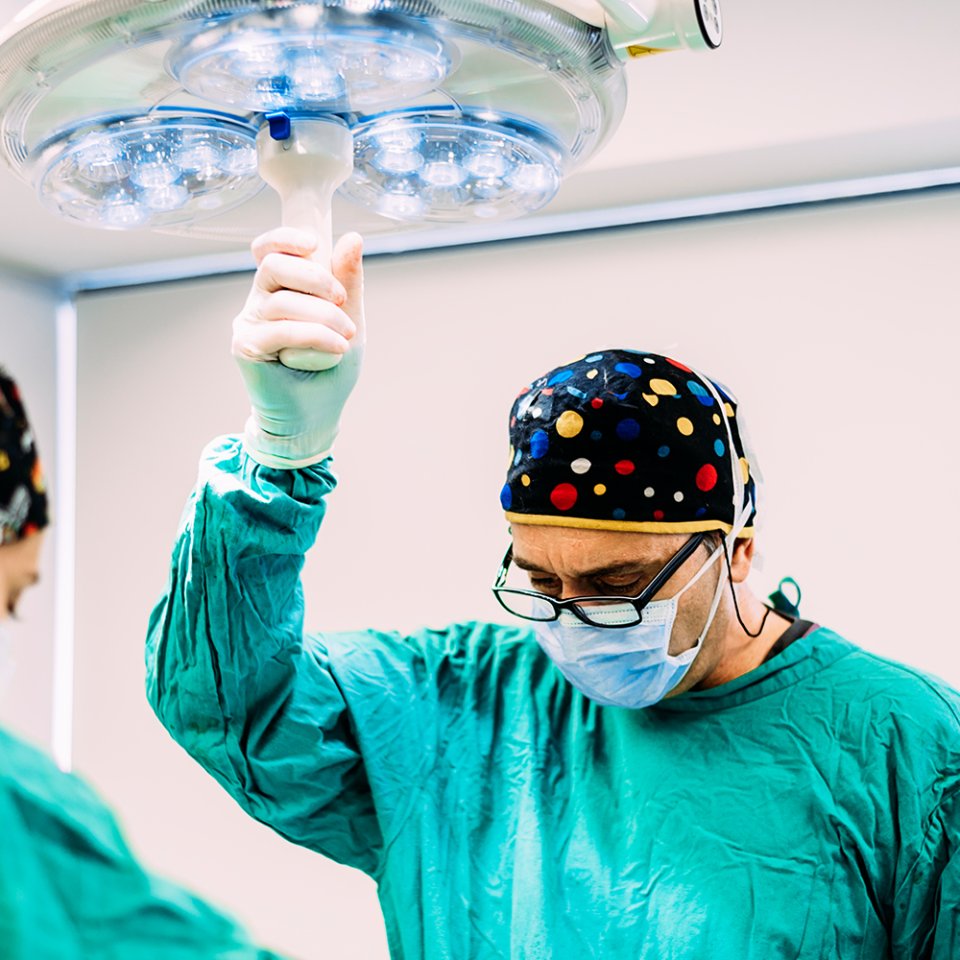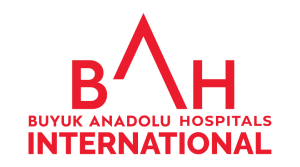What is Laparoscopic Surgery?
Laparoscopic surgery, also known as minimally invasive surgery or keyhole surgery, is a modern surgical technique that uses small incisions and a tiny camera (laparoscope) to perform operations inside the abdomen or pelvis. Compared to traditional open surgery, it allows for less pain, smaller scars, shorter hospital stays, and faster recovery.

Why is Laparoscopic Surgery Preferred?
-
Minimally invasive: Only 0.5–1 cm incisions are made.
-
Less pain and faster healing compared to open surgery.
-
Lower risk of infection and bleeding.
-
Better cosmetic results with almost invisible scars.
-
Shorter hospital stay – many patients are discharged within 1–2 days.
Conditions Treated with Laparoscopic Surgery
At Büyük Anadolu Hospital, laparoscopic techniques are applied to a wide range of procedures, including:
Gallbladder Removal (Laparoscopic Cholecystectomy)
A surgical procedure performed to treat gallstones or gallbladder inflammation (cholecystitis). Using small incisions, the gallbladder is removed laparoscopically. This method provides less pain, shorter hospital stay, and faster recovery.
Hernia Repair (Laparoscopic Hernioplasty)
Laparoscopic hernia repair is a modern technique that treats abdominal or inguinal hernias through small incisions. A mesh is used to reinforce the weakened muscle area. Compared to open surgery, it offers less pain, faster recovery, and a quicker return to daily activities.
Appendix Removal (Laparoscopic Appendectomy)
Laparoscopic appendectomy is a modern surgical procedure that removes an inflamed appendix through small incisions. Compared to open surgery, it offers less pain, shorter hospital stay, and faster recovery. Early treatment significantly reduces the risk of complications.
Colorectal Surgery
Colorectal surgery involves the surgical treatment of diseases affecting the colon, rectum, and anus. The laparoscopic colorectal technique allows the treatment of conditions such as colon or rectal cancer, diverticulitis, ulcerative colitis, and polyps through small incisions. Compared to open surgery, it offers less pain, faster recovery, and shorter hospital stays.
Spleen Surgery
Laparoscopic splenectomy is a modern surgical procedure where the spleen is removed through small abdominal incisions using a camera and specialized instruments. It is commonly performed for conditions such as splenomegaly, trauma, or blood disorders. Compared to open surgery, it offers less pain, smaller scars, and faster recovery.
Liver and Pancreatic Surgeries
Liver and pancreatic surgeries are performed to treat tumors, cysts, bile duct obstructions, or trauma involving these vital organs. With laparoscopic techniques, these procedures can be done through small incisions, resulting in less blood loss, reduced pain, and faster recovery. Common procedures include liver resections, pancreatic tumor removal, and cyst drainage.
Bariatric (Weight Loss) Surgeries
Bariatric surgery includes surgical procedures that provide effective and long-term treatment for obesity. These surgeries help with weight loss by reducing stomach size or altering the digestive system’s absorption capacity. Common types include sleeve gastrectomy, gastric bypass, and gastric balloon procedures. When performed laparoscopically, they offer less pain, shorter hospital stays, and faster recovery.
How is Laparoscopic Surgery Performed?
Anesthesia: General anesthesia
Process:
-
Small incisions are made in the abdomen.
-
A laparoscope (camera) is inserted to visualize the organs.
-
Specialized surgical instruments are used to perform the operation.
Duration: Depends on the type of surgery (30 minutes – 3 hours).
Recovery: Most patients return to daily activities within 1–2 weeks.


Recovery After Laparoscopic Surgery
Patients usually start walking within a few hours after the procedure.
Normal diet can be resumed in 1–2 days.
Light physical activities after 1 week; full recovery in 2–3 weeks (depending on surgery type).
Post-operative pain is generally mild and managed with simple medications.
Possible Risks & Our Preventive Measures
| Possible Risks | Our Preventive Measures |
|---|---|
| Bleeding or infection | Sterile surgical environment & antibiotic prophylaxis |
| Injury to surrounding organs | Advanced imaging & expert laparoscopic surgeons |
| Hernia at incision site | Proper closure techniques & follow-up care |
| Anesthesia-related complications | Pre-operative tests & continuous monitoring |
| Rare conversion to open surgery | Performed only if necessary for patient safety |
Laparoscopic Surgery FAQ
Yes, it is considered very safe and is the preferred technique for many general surgeries.
Only very small scars (0.5–1 cm) remain, and they fade significantly over time.
Most patients are discharged within 1–2 days, depending on the type of surgery.
Usually within 1–2 weeks, depending on the nature of your job and type of surgery.
